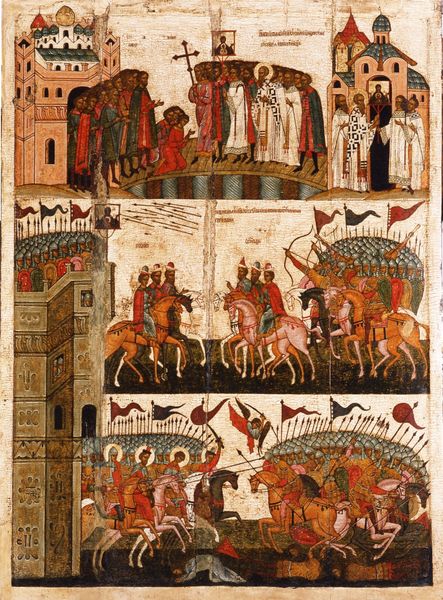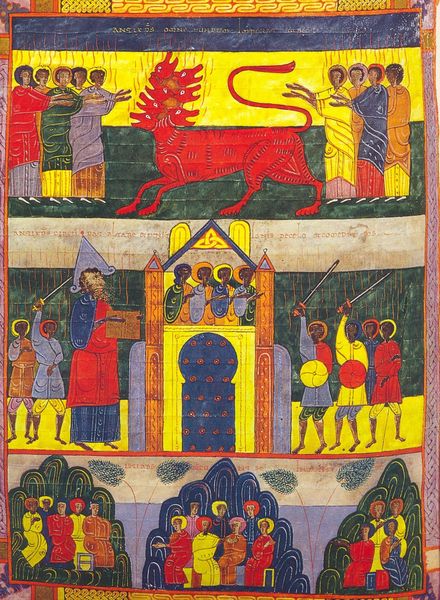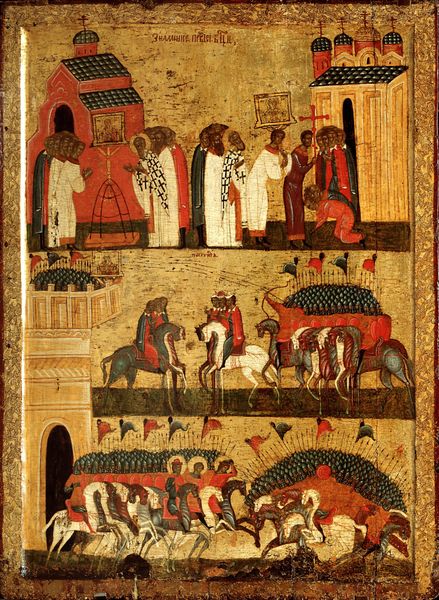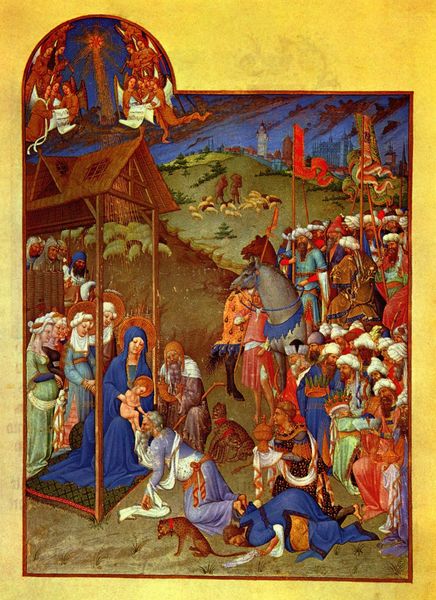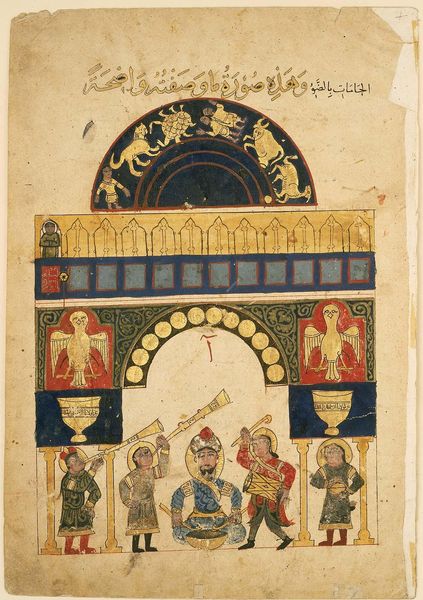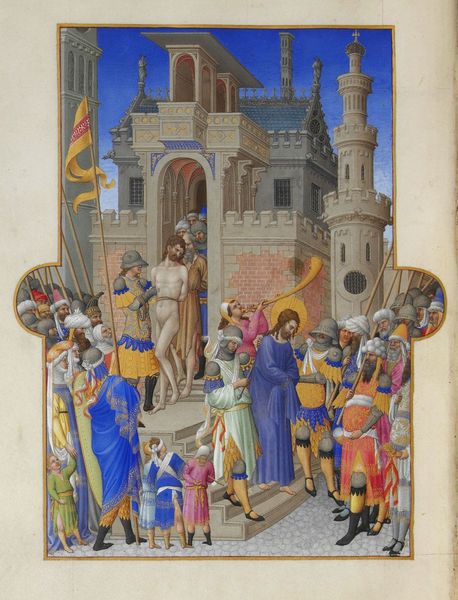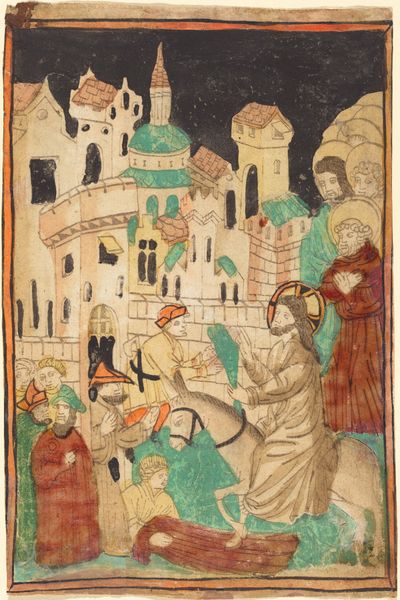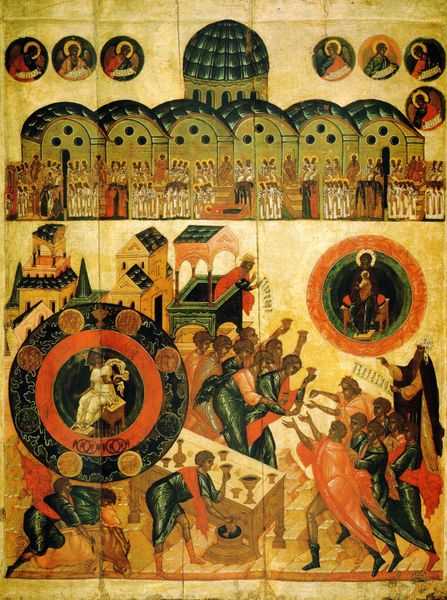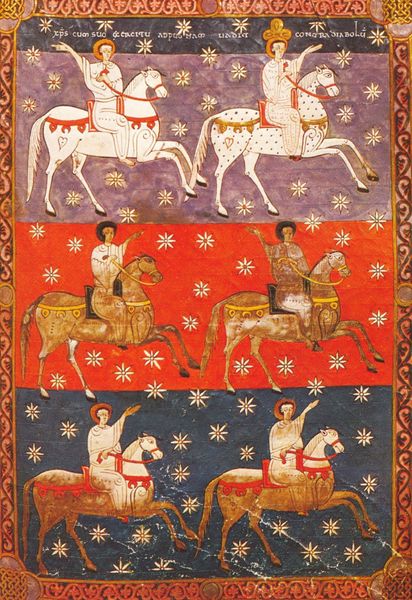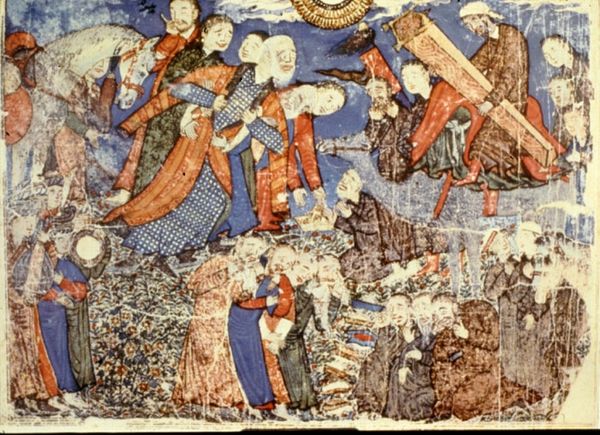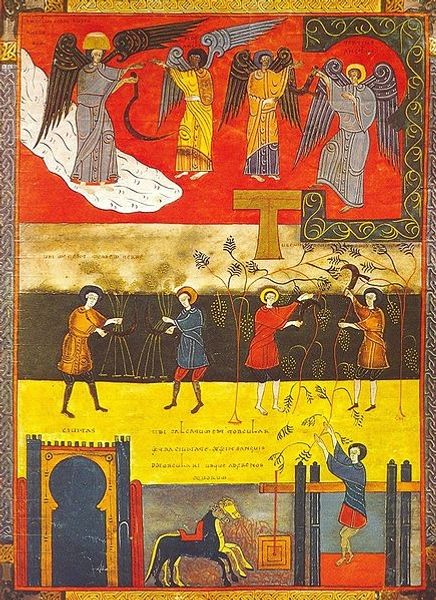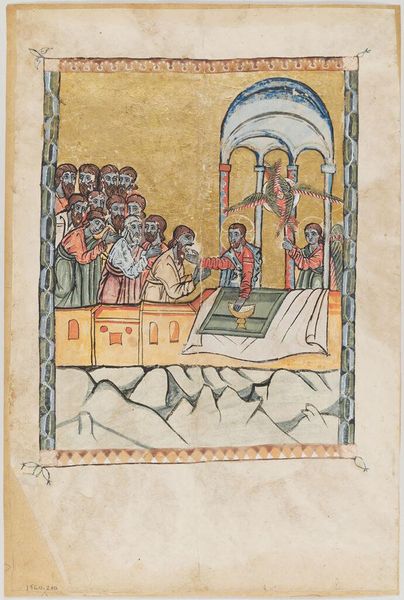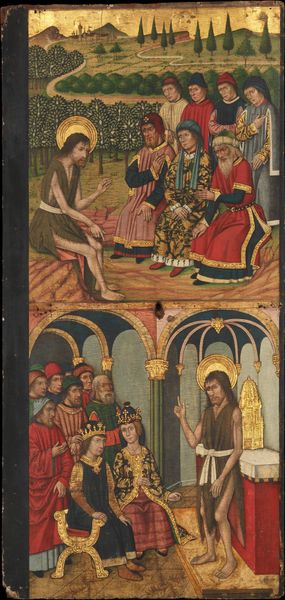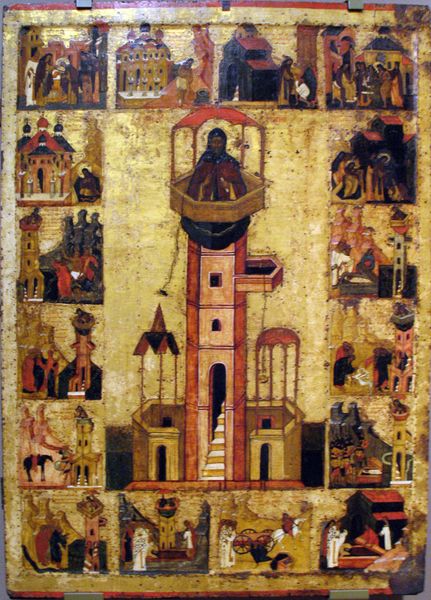
Battle Between Novgorod and Suzdal in 1170 (Miracle of the icon 'Theotokos the Sign') 1600
0:00
0:00
tempera, painting
#
byzantine-art
#
medieval
#
narrative-art
#
tempera
#
painting
#
figuration
#
history-painting
Dimensions: 87.8 x 63.8 cm
Copyright: Orthodox Icons,Fair Use
Editor: We’re looking at “Battle Between Novgorod and Suzdal in 1170 (Miracle of the icon ‘Theotokos the Sign’)", a tempera painting from 1600. It feels segmented, almost like a comic strip depicting this intense battle. What formal qualities stand out to you? Curator: The composition presents a fascinating study in spatial organization. Note how the artist uses registers to compartmentalize the narrative. Each section functions as a distinct plane, flattening perspective and emphasizing symbolic representation over realistic depth. The color palette, dominated by earth tones and punctuated by vivid reds and blues, contributes to the work's visual rhythm and its function within Orthodox liturgical practice. Editor: So the lack of traditional perspective emphasizes the narrative and symbolic elements? Curator: Precisely. Consider, too, the stylized rendering of figures and architecture. Are there variations or visual echoes among the figures and compositional units? Editor: The faces all appear very similar, almost mask-like, which seems intentional. It de-emphasizes the individual and elevates the collective, and even those assembled ranks share shapes, hues and gestures with the towers themselves. How does this uniformity and rhythm contribute to the overall meaning? Curator: The repetition creates a sense of unity, even amidst the chaos of battle. It reinforces the idea of a divinely ordered world, reflecting a celestial harmony mirrored in earthly events. Do you see the icon itself as a formal pivot in this reading? Editor: Definitely. It’s a visual anchor. Its presence, centered above the conflict, creates a clear vertical axis that directs the eye and suggests divine intervention. Thanks for elucidating that dynamic, there are formal strategies that were hidden at first glance. Curator: Indeed. By examining these structural and chromatic elements, we can decipher the painting’s internal logic and appreciate its unique artistic language.
Comments
No comments
Be the first to comment and join the conversation on the ultimate creative platform.
